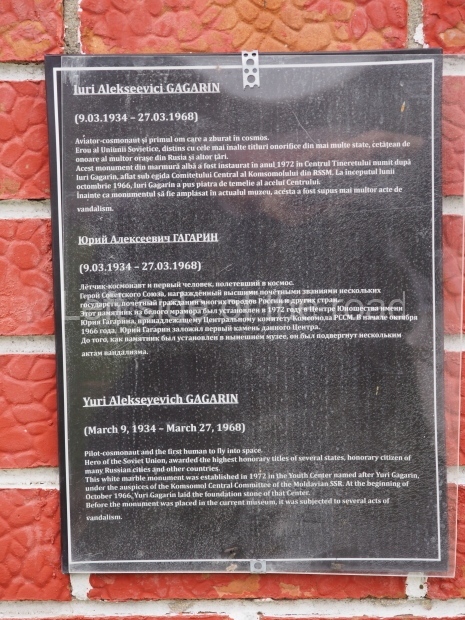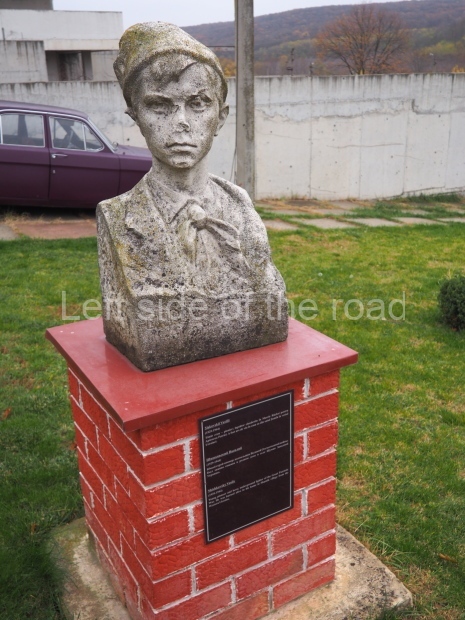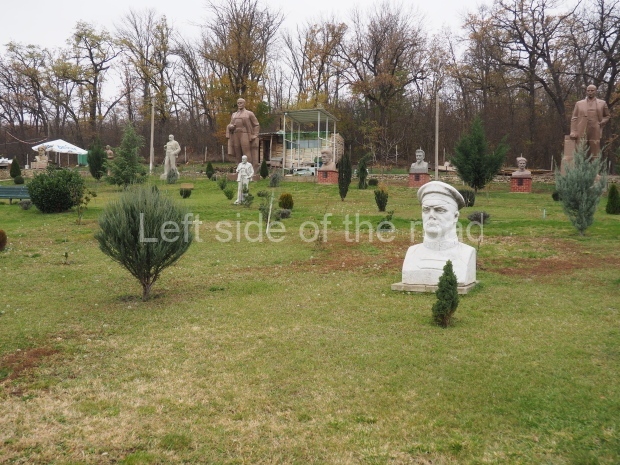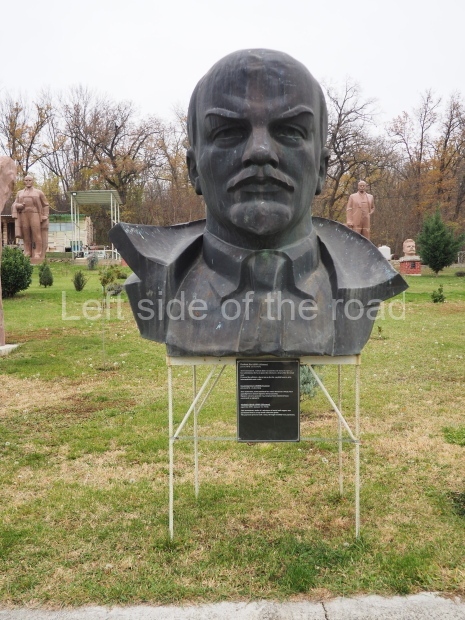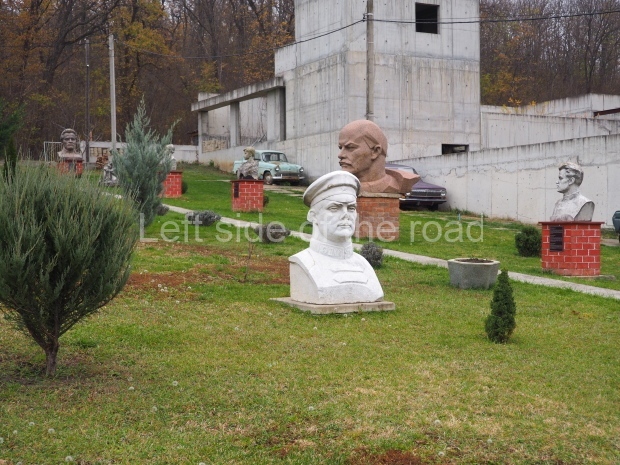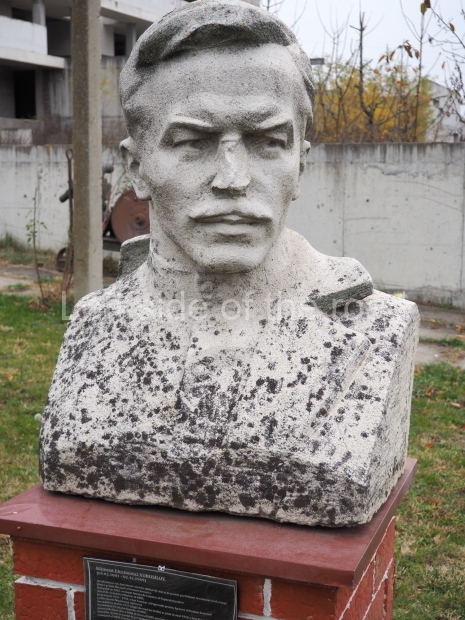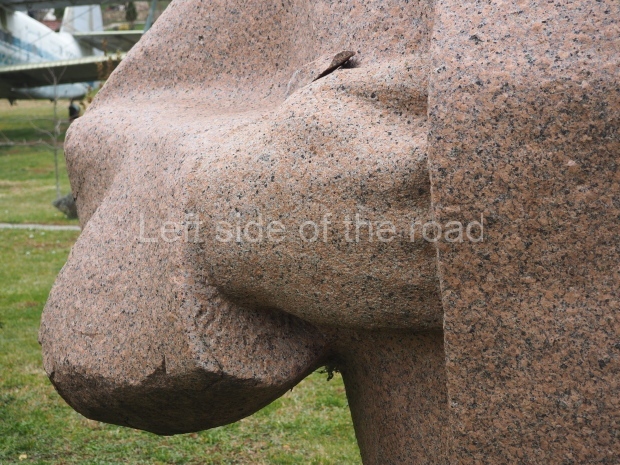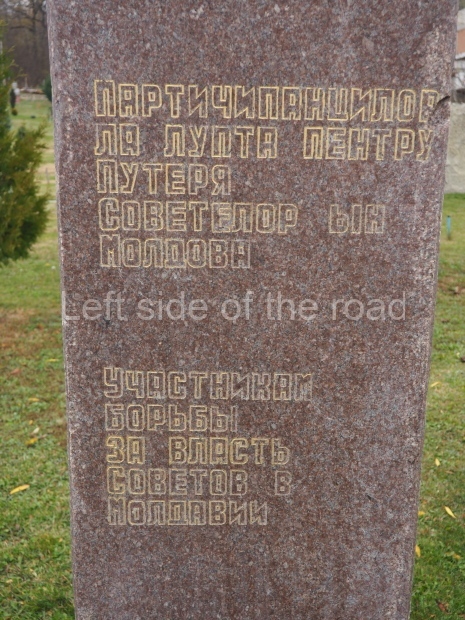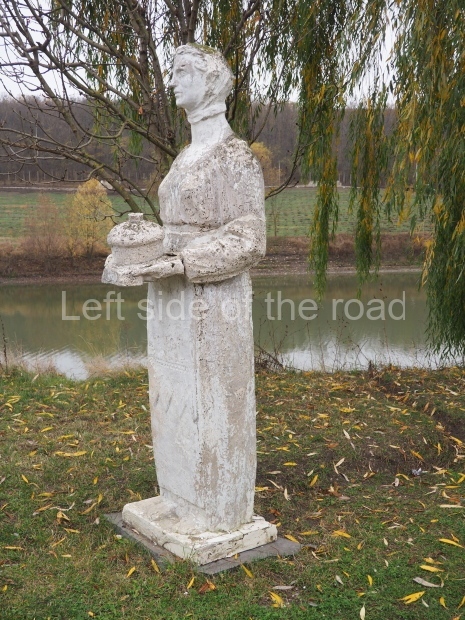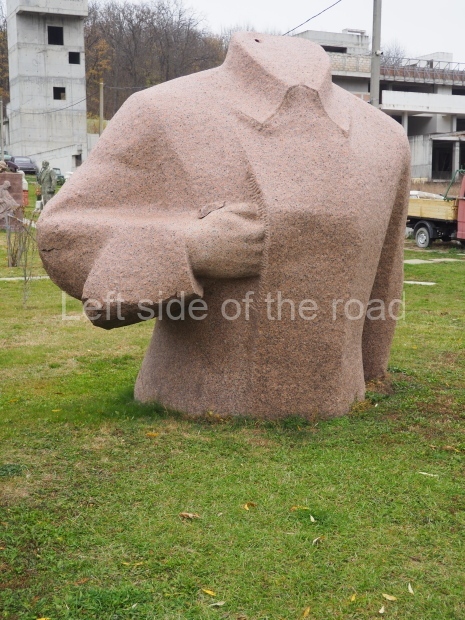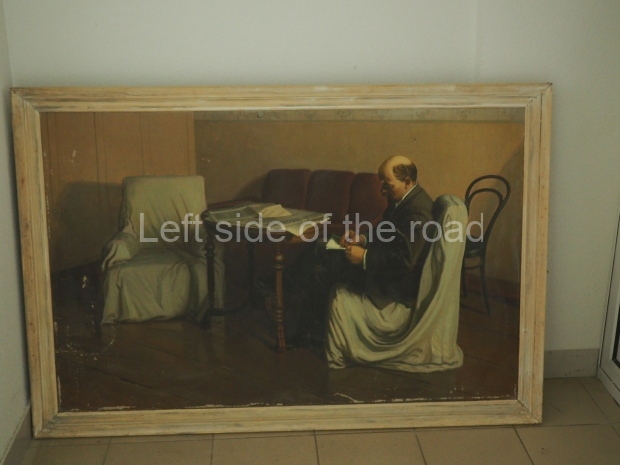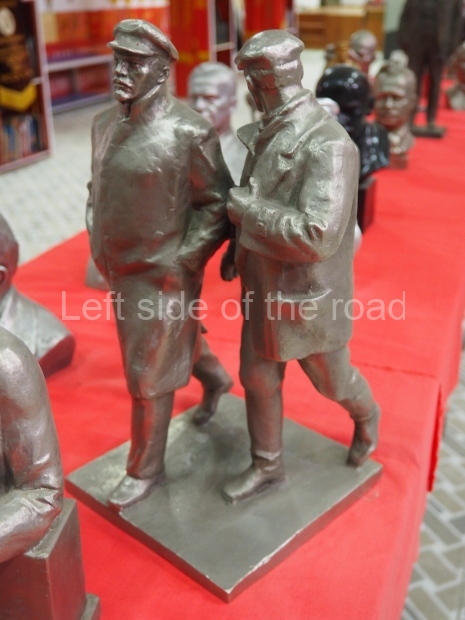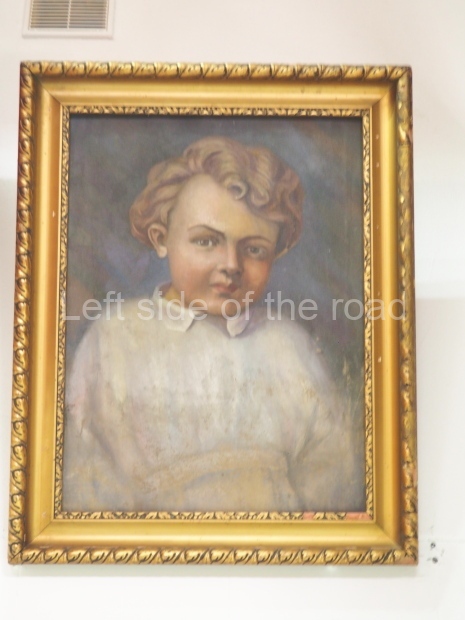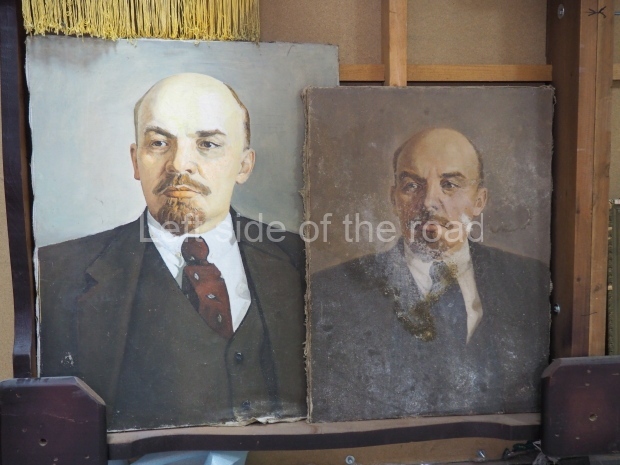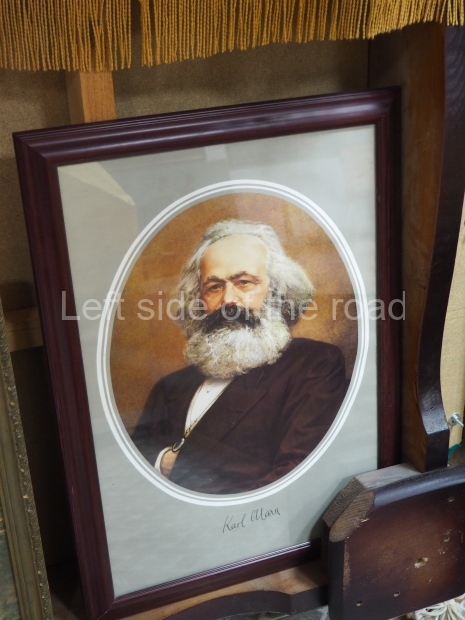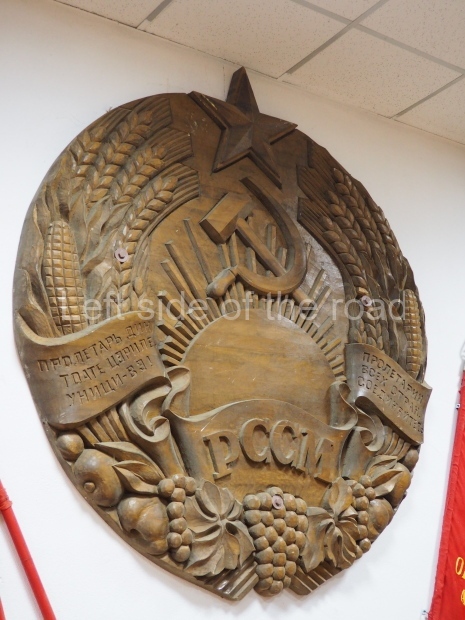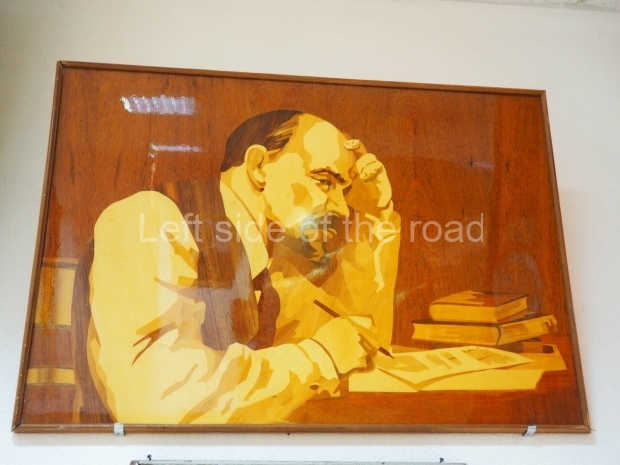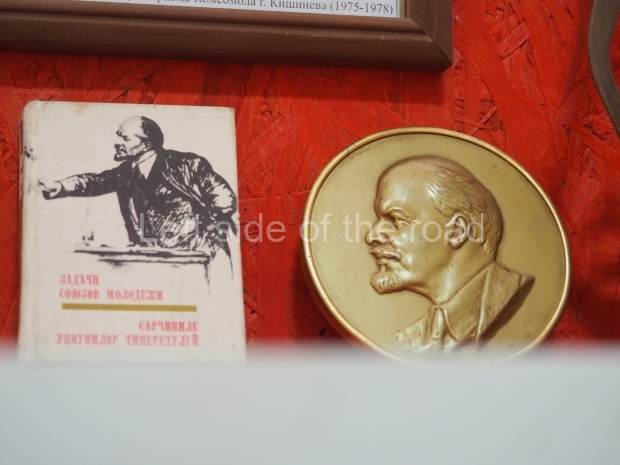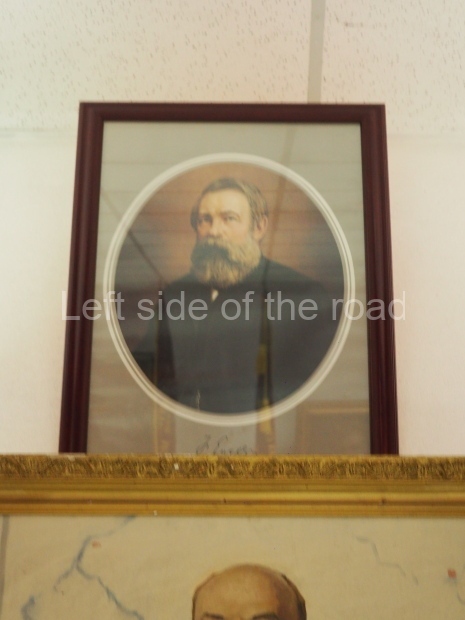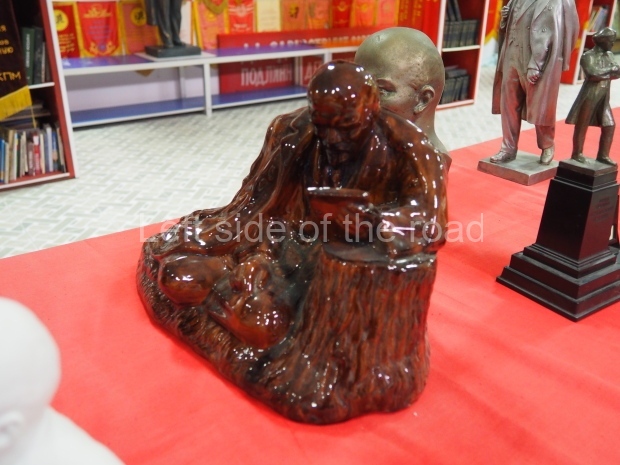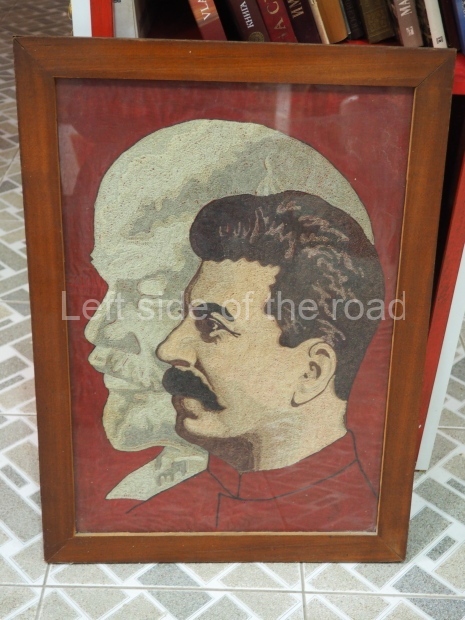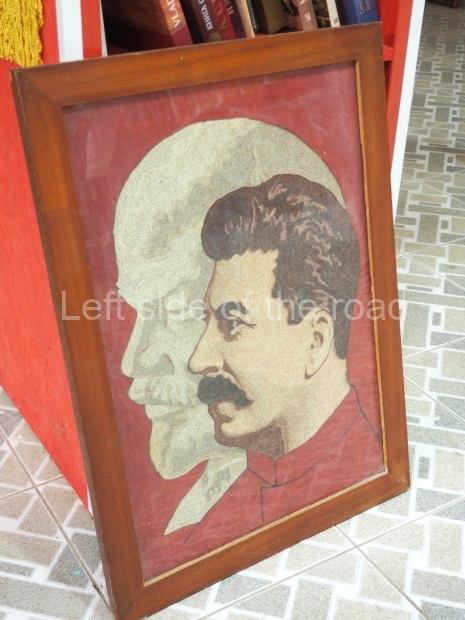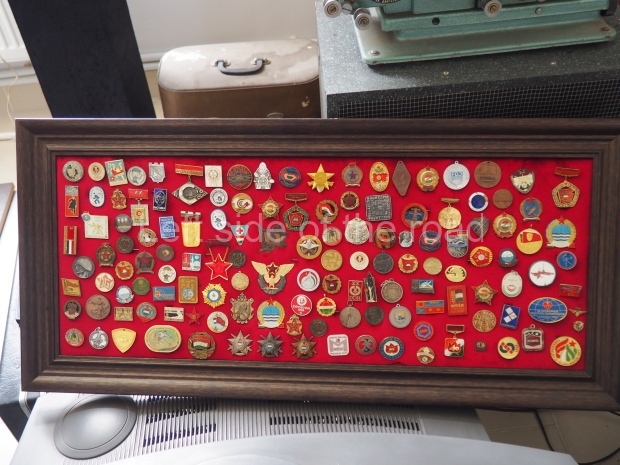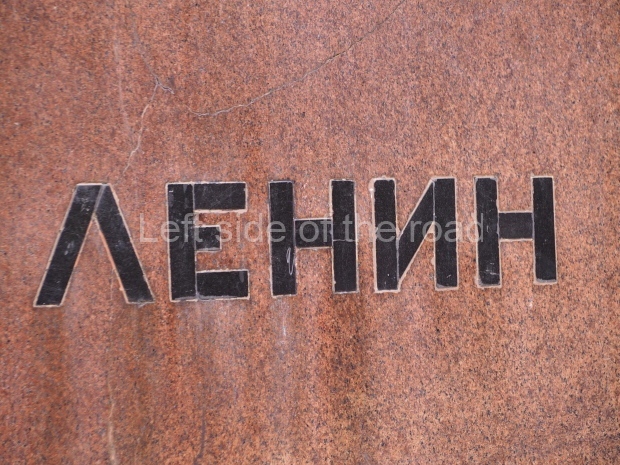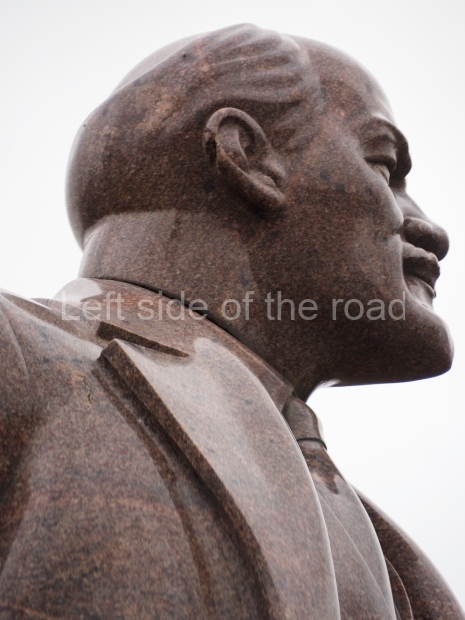More on Moldova – on the Post-Socialist Countries – Eastern Europe and Asia page
Soviet Open Air Museum of Petru Costin – near Chișinău – Moldova
This is the outside companion piece to the Petru Costin Gallery in Ialoveni. It is home to those artefacts (including a small plane and a couple of helicopters) that were either designed to be placed in the open air or are too big to be inside the gallery.
There’s a description of many of the items – so you can know who is actually represented and also at times an indication of where they came from, when and why they were removed. However, there’s no information on how they ended up in a field on the side of a valley in central Moldova.
There’s only one image of JV Stalin and that has been heavily vandalised. This initial attack would have taken place in the early 1960s (I would imagine) but it remained otherwise intact for the next 30 years during the period of Revisionist control of the first worker’s state. Where? It’s not known.
Not surprisingly there are many statues/busts of VI Lenin but amongst the collection there are also one or two surprises. There’s a head and shoulders of both a young and an older Nadezhda Krupskaya, Lenin’s wife. There’s a bust of Yuri Gagarin, the first man into space, who I would have thought would have survived the collapse of the Soviet Union as he represented a Russian as well as a Soviet achievement. Also, not a surprise, is the presence of a number of images of FE Dzerzhinsky (‘Iron Felix’), the first head of the Cheka.
YM Sverdlov, barely lived for two years after the October Revolution as he succumbed to the ‘Spanish’ flu pandemic in 1919 (a matter that rarely gets mentioned in histories of the Revolution but which must have had an impact on both sides in the Civil War/War of Intervention. There are a couple of busts of SM Kirov, the leader of the Bolsheviks in Leningrad who was assassinated in 1934. Military leaders are also represented, including VI Chapayev and MV Frunze, who both played a crucial role in the war to protect the Revolution during the Civil War against the White, reactionary forces.
There’s a couple of busts of Karl Marx but Frederick Engels isn’t represented. There are also a couple of statues of MI Kalinin, the Soviet President for just under 20 years – one of which doesn’t quite look right. The large, headless red torso is almost certainly that of JV Stalin – it has his classic stance. The whole statue must have been immense but there’s no more information about where it might have stood. It’s only speculation (based only on its size) that it might be what remains of the statue that stood at the entrance to the Volga-Don Canal, a little south of Stalingrad, which was replaced by a statue of VI Lenin.
There were also some statues – and pieces of statues – which wouldn’t have been controversial but had just, presumably, become ‘unloved’, or were in the wrong place at the wrong time.
This statue park is similar to the Park of the Fallen/Muzeon Art Park in Moscow, the Museum of Socialist Art – Sofia and Memento Park close to Budapest.
Location;
2J94+54 Scoreni
That doesn’t look like an address but if you put it into a map search it will get you there.
How to get there;
This is a very unfriendly public transport location. The museum is about 5 km north-west of the town of Suruceni and the museum itself is along a dirt road just under a kilometre from the main road. It goes downhill (steeply) which means it comes up hill even more steeply. Consider the option of talking to Natalia at the Petru Costin Gallery in Ialoveni. It might turn out a bit more expensive but it will get you there much easier.
GPS;
47.01796 N
28.60530 E
More on Moldova – on the Post-Socialist Countries – Eastern Europe and Asia page







